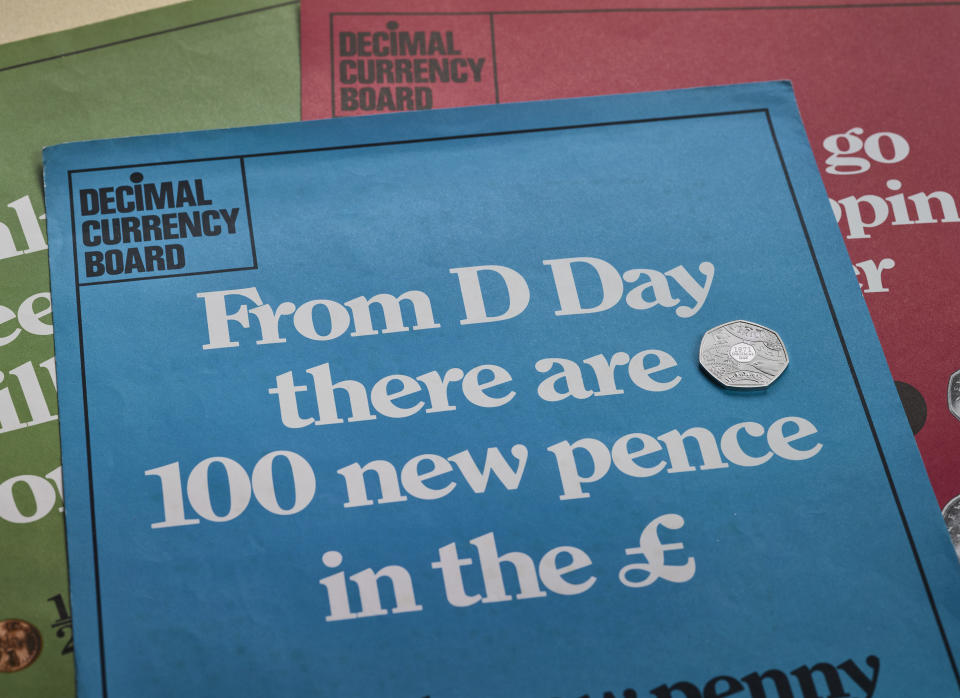New 50p coins launched to celebrate 50th anniversary of Decimal Day
New commemorative coins celebrating the 50th anniversary of Decimal Day have been launched by the Royal Mint.
The new decimal currency system was formally adopted on February 15 1971, evolving from the centuries-old tradition of pounds, shillings and pence.
The transition to decimalisation took years of planning and also involved a huge information campaign.
In order to achieve the challenge of striking the new coins, a new factory was needed, along with new machinery, production techniques and processes.
The new 50p denomination commemorative coin was designed by the Royal Mint’s Dominique Evans.

She said: “Even though people understood the reason for Decimal Day, they had and still have a fondness for the pre-decimal coins.
“Those pre-decimal coins can still be found all over the country, in random jumbles in boxes and drawers, which led me to place together the denominations as if you had just found them and were looking at them from above. The sweet wren peeks out from under the crown of a threepence, sitting alongside the rose of the sixpence – all below the iconic Britannia.”
Clare Maclennan, divisional director of the consumer division at the Royal Mint, said: “This year marks a significant anniversary in the Royal Mint’s 1,100-year history, the 50th anniversary of Decimal Day.
“In 1966, the decision was made to evolve the nation’s coinage from pounds, shillings and pence to a new decimal currency. This was a major logistical exercise that impacted on every person in the country and we now celebrate this historic moment on a commemorative 50p coin with a design that brings a sense of nostalgia to the occasion.”
The Mint is also appealing for coin collectors to share images of their coin collections. Images can be uploaded on to the Royal Mint website.
The sheer volume of coins required for the decimalisation changeover meant that the Royal Mint needed to move location from Tower Hill in London to a new production facility.
In 1968, the new Royal Mint site in Llantrisant, South Wales, was opened by the Queen and the first of almost six billion coins required for decimalisation went into production.
The first of the new coins, the 5p and 10p, entered circulation in April 1968.
They bore new heraldic designs but corresponded in size and value to the shillings and florins and, so, were able to run alongside them as their “decimal twins”, the Mint said.
To overcome confusion during the changeover, as well as running the old and new currencies alongside each other, there were publicity and information campaigns, with leaflets, posters and television broadcasts.
Since decimalisation, the coins in circulation have continued to evolve. The half penny disappeared in 1984, the 20p was introduced in 1982 and the £1 coin first appeared in 1983. The 5p and 10p coins were re-sized in the 1990s.
The new commemorative 50p coins are being made available to buy from www.royalmint.com in a range of precious metal and base proof finishes, with prices starting from £10 for a brilliant uncirculated coin and going up to £2,175 for a gold version.

 Yahoo Finance
Yahoo Finance 